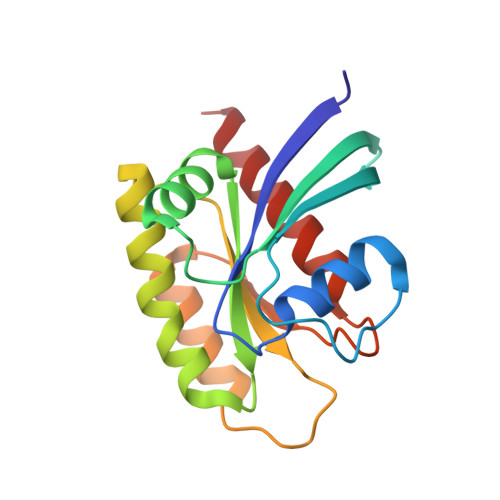A method for the second-site screening of K-Ras in the presence of a covalently attached first-site ligand.
Sun, Q., Phan, J., Friberg, A.R., Camper, D.V., Olejniczak, E.T., Fesik, S.W.(2014) J Biomol NMR 60: 11-14
- PubMed: 25087006
- DOI: https://doi.org/10.1007/s10858-014-9849-8
- Primary Citation of Related Structures:
4PZY, 4PZZ, 4Q01, 4Q02, 4Q03 - PubMed Abstract:
K-Ras is a well-validated cancer target but is considered to be "undruggable" due to the lack of suitable binding pockets. We previously discovered small molecules that bind weakly to K-Ras but wanted to improve their binding affinities by identifying ligands that bind near our initial hits that we could link together. Here we describe an approach for identifying second site ligands that uses a cysteine residue to covalently attach a compound for tight binding to the first site pocket followed by a fragment screen for binding to a second site. This approach could be very useful for targeting Ras and other challenging drug targets.
Organizational Affiliation:
Department of Biochemistry, Vanderbilt University School of Medicine, Nashville, TN, 37232-0146, USA.

















